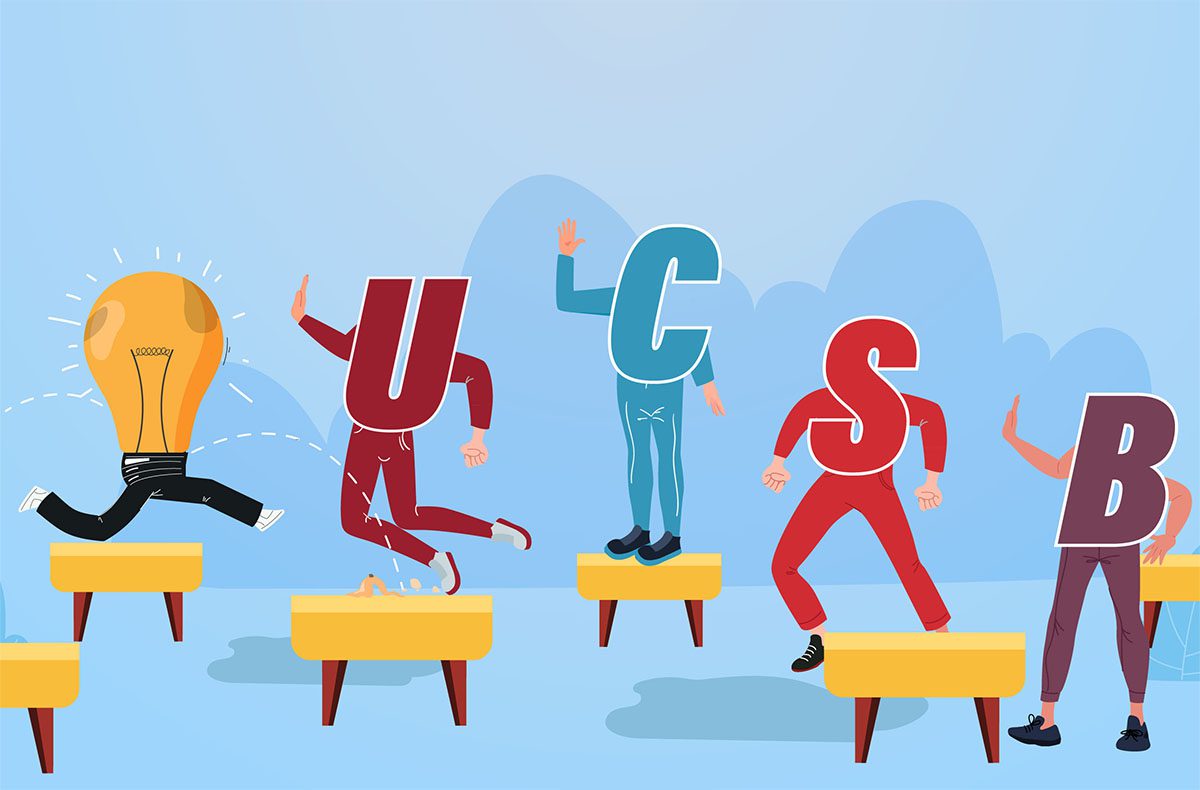
Illustration by Sarameeya Aree
“Mark, this idea of yours is not unique.” Then I hear, “Mark, your proposal is not compelling.” Then, “Mark, seriously? How could we even maintain such a proposition?” Finally, they say, “Mark, do you expect us to believe you can do that? Be real.” Yes, this is what it sounded like when my creativity and idea generation got out of my mouth before going through what I now know to be a much more rigorous screening process.
Those comments challenged me to work on my ideas before bringing them up in a meeting or talking with my team. Lesson learned.
Why your “great” ideas often fail
Ideas sound great inside your head when your internal committee is hard at work trying to be clever and innovative. But when your youthful enthusiasm causes you to open your mouth before the idea is fully baked, that’s when you can get the comments I started this piece with. I’m not talking about brainstorming. That’s another type of idea generation that has its challenges.
I am addressing those ideas that you incubate on your own; however, you do that. As much as I value collaboration, there are times when idea generation is a solo effort before it becomes a team sport.
I’ve found my best ideas when I give myself whitespace, the unplanned time when I can walk, wander, and let my mind work on problems I’ve encountered in an overly-booked calendar. Some people need time to think about a problem that requires an immediate answer, while others have a quick-fire response. Many need extended time to let their minds wander and muse over their untested ideas and solutions.
What has worked well for me is the result of years of working on problems, coming up with ideas, then spending the time needed to turn them into action. This might be a product introduction, an investor pitch, an Instagram reel, a class you want to teach, or any idea that needs to be incubated and brought to life.
During a work session in the early days at Wavefront, my computer animation company, an outside consultant, a company friend, and I were batting around ideas for a rebrand we were considering. She poked and prodded me about my thoughts and conclusions and asked various questions to test my thinking and the logic behind my conclusions.
I noted the questions. Then, as I typically do, I rewrote them and turned them into an acronym I could pull out when needed. I’ve used it for decades now, and once you hear it, you’ll recognize how simple it is—and it’s that simplicity that holds so much power.
How to test whether an idea is good enough
What has worked very well for me is this simple test that I ask myself every time I have an idea that I need to get out of my head and into a conversation to see if it’s as good as I think. This test asks four simple questions and forces you to be realistic about your proposed idea.
While there are many heuristics and schemas for idea generation and evaluation, this model has produced consistently for me. I call it the UCSB test. (In this instance, UCSB does not abbreviate for University of California, Santa Barbara, where I happen to live.) In my case, I used those letters because they helped me remember the four questions I asked myself before I pitched an idea to someone else.
Is the idea:
Unique?
Compelling?
Sustainable?
Believable?
Why are these four words so powerful in the testing of an idea?
The UCSB test for idea assessment is straightforward and comprehensive, covering multiple evaluation dimensions beyond novelty or uniqueness. It considers crucial factors such as the idea’s sustainability, believability, and persuasiveness to ensure that it is innovative but also practicable and feasible.
The UCSB test makes us realistic about their long-term potential and real-world applicability by challenging us to analyze and question our proposals critically. It helps identify potential weaknesses or flaws early on, saving time and resources pursuing ideas that may not work out. The UCSB test encourages us to think beyond the initial excitement and enthusiasm and evaluate ideas with a practical and critical mindset to determine if an idea may not be viable or convincing. The UCSB test is not a one-time evaluation but can be applied iteratively.
Putting the UCSB test into practice
These four letters have saved me countless times, as when I run an idea through the test, it will frequently fail on at least one of the parameters. And even though this is MY test, I still find I miss the mark, which is the entire point of a test. It’s like a QA pass on your idea. So you need to be vigilant, as when you let down your guard, an idea will slip past that seems great on the face of it, yet it would have failed one of the criteria in UCSB.
Let me explain. I’ve used the following hypothetical case to elaborate on the UCSB test to colleagues over the years. It seems to do the trick, as it passes the test on its own, kind of a meta way to use the test to test the test case. (Like biting your own teeth.)
Imagine planning a big corporate event, and someone says, “I know someone we could bring in for the entertainment! They will bring a live elephant into the main ballroom and cause it to hover about 3 feet off the ground for a minute.” The enthusiasm for the idea is palpable, and everyone is intoxicated about seeing it happen. We’ve seen a lot of stuff. So why not a floating elephant?
So is it Unique? Certainly, I’d watch it.
Is it Compelling? I’d look for many things: how’d they get the elephant into the room? What’s with all the mystery of the magician? Now the beast is starting to rise slowly, and the magician is contorting, sweating, and looking like it’s a lot of work. So, yes, it’s compelling.
Is it Sustainable? Maybe. You’d only need to have it hover for a fraction of a second, yet in this example, our elephant is floating for an entire minute. So, sure, it’s sustainable, at least for a minute.
However, here’s where this fails. Do you believe someone could get a 16,000-pound animal into a ballroom and, with no visible equipment, cause the elephant to hover 3 feet off the ground for a minute? Nope. It fails the Believability test dramatically.
It barely passed the other tests, but I’m making a point. So maybe, when it came time to suggest something interesting for our offsite, I keep the floating elephant idea to myself. Of course, this is an exaggerated case, but you see how it works.
So let’s try something more practical and something that happened recently to me. I’m the Executive Producer of TEDx Santa Barbara’s Salon series, Making Waves: Conversations with Influencers and Disruptors. I do an online conversationally-formatted show every other week. Most recently, I have been interested in the unintended consequences of COVID that have not received enough attention. One is the domestic violence behind closed doors, especially during the first couple of years of enforced isolation.
So, is my topic Unique? Yes, especially to a Santa Barbara audience that may find this topic disturbing to know it exists and is widespread in our community. Is it Compelling? Yes, as the trauma extends from child abuse to elder abuse and everything in between, and the reality is that it can take three generations to excise the damage done.
Is it Sustainable? More community solutions and people are working to rectify this horrible truth than I realized. They understand the generational challenge, so sustainability is baked into the concept. And finally, is it Believable? This was the hard one at first, and when I talked to my guest about this, as I was skeptical, she told me about the team of Assistant District Attorneys that work exclusively in this area. I was stunned.
As a result, our show was a huge success and will be helpful to all of the organizations locally working diligently to help families who desperately need it.
Simple test. Simple answers, usually. Great results.
I welcome you to take out a current proposal, project, or talk you will be giving and ask yourself, “Is it unique, compelling, sustainable, and believable?” The answers will tell you where to spend more time fine-tuning your message or seeking another. The world needs your ideas… and it needs good ideas. Hopefully, UCSB can make those one and the same.



